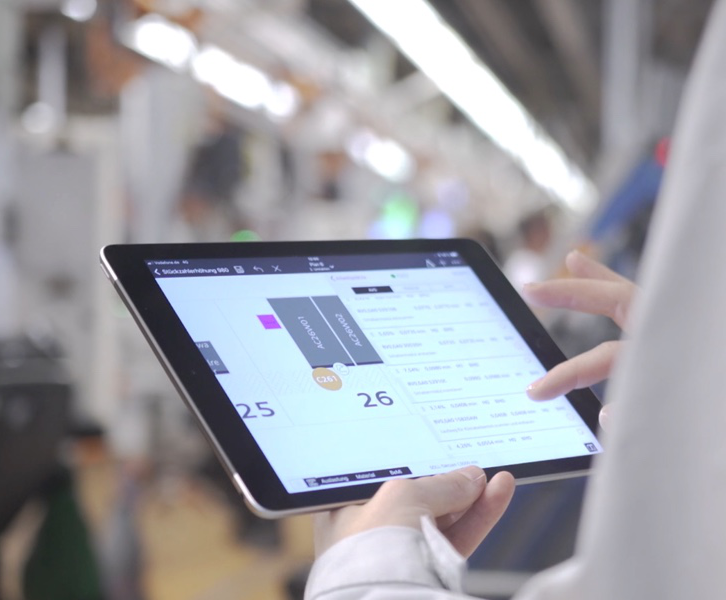Chatbots – More Than a Fad


This is the second SABO Blog article about chatbots in which I would like to draw attention to the benefits for companies and customers in communicating via chatbots. In the first article about chatbots by Boris Penko, the focus was on technical aspects.
Chatbots are used more and more these days and can have interesting benefits for companies. They are supposed to save time and money, as well as increase customer satisfaction and the customer base. Is this really the case? Let’s find out…
In a study by Salesforce on networking with customers, the relevance of the customer experience was examined, among other things. For 84 percent of all customers surveyed in the study, a positive customer experience is just as important as the product or service itself.
With an exceptional customer experience, companies can set themselves apart from their competitors and at the same time raise expectations of other companies. Other factors are also continuously raising customer expectations: ever-changing products and increased awareness of company values, ethics, and business practices. Sharing customer experiences via peer reviews creates transparency, e.g., on Amazon. 54% of customers surveyed say companies need to change the way they engage with them. These are good conditions for companies to consider using chatbots.
Chatbots are a well-suited approach to using current technologies to generate real value for both sides - customers as well as companies and institutions. Typical use cases include customer service, product information, branding, purchasing support, use by public authorities, and in tourism. Chatbots also have great potential for industrial use cases.
Currently, chatbots are predominantly used in B2C applications. In customer communication, companies can benefit strongly from using chatbots. Here, I do not mean chatbots that only connect customers directly to an employee. The benefit can be created by chatbots that can respond to thousands of customers at the same time, 24/7. Customer preferences are changing quickly and require a sound customer experience on all channels.
According to a report by the Aberdeen Group, companies which follow an omnichannel approach are much more successful in retaining their customers (at a rate of 88%) than companies which do not follow this path (33%). With an omnichannel chatbot that is implemented e.g. the company website, Facebook Messenger, WhatsApp, or really wherever users interact, all of these channels can be managed from one platform. Many companies understand the importance of being present on these channels, but do not have the resources to support their customers on each of these. An omnichannel chatbot can support this effort and deliver substantial benefits to the company. This has advantages that justify a development effort - for customers, who receive the information they need quickly and with virtually no waiting time, and also for companies, since the processing can be done with significantly less effort.
Basically, there are rule-based and conversational chatbots. With rule-based chatbots, so-called click bots, no communication takes place in the actual sense, i.e. the chatbot does not respond to freely formulated questions. The customer is given various choices and must choose one option at each stage of the query. Further questions and answer options channel the customer to a final answer. Whether all open points of the customer could be clarified is not certain without a specific query.

Nevertheless, a click bot can be sufficient for many applications, for example queries which are often repeated. Likewise, there are chatbots that enable direct chat with a service employee and thus facilitate a smooth transition when questions are not answered sufficiently from the customer's point of view.
Chatbots increase the interaction rate with customers due to their simple and fast availability and help to clarify current questions quickly and easily. Chatbots can be used as an information, sales, and customer loyalty tool. The application scenarios are quite different. For example, there are chatbots that alert bank customers to unusual bookings, a coronavirus bot from the WHO, and a KLM chatbot to book flights and pack suitcases. Chatbots that assist customers with their purchases are also common. In the lowest part of the sales funnel, the representation of sales processes in the form of a funnel, support (bottom of the funnel) from chatbots makes sense because the customer is close to making a purchase.
If open questions can now be clarified quickly and with little effort for the customer, this increases the likelihood that a purchase will be made.
These are applications that focus on the customer. Chatbots can also support the company's own employees using artificial intelligence to process customer inquiries quickly and professionally. Particularly in the case of complex topics, e.g., during product discovery, there can quickly be hundreds or thousands of pages of product information in which the employee must navigate in order to clarify questions and provide information without wasting time.
However, chatbots cannot easily replace all the competencies of the company's own employees. The more individual and complex the queries are, the lower the repetition rates and the more time-consuming it is to define the necessary content and logical relationships. Here, the use cases to be implemented should be defined realistically so that the effort and the benefit match.

Conversational chatbots are already in use which use a number of different communication channels, such as web, SMS or e-mail, and which understand the user's input and respond to it. Communication takes place via keyboard or speech using NLP (Natural Language Processing). Here, the standard is high. Only when the communication flows smoothly, the answers match the user's input, and the interaction is maintained, does the chatbot create the feeling of communication in the user. If the communication falters or answers appear which reveal that the input was not understood, this can lead to a quick termination of the chat by the user.
On the other hand, a fluid and informative chat flow is a positive customer experience. The user receives the desired information without detours using modern and innovative technology. Not only the technology used, but also the training of the chatbot plays a decisive role in its success with customer inquiries. Ideally, the chatbot recognizes a request even if the wording is different, if there are typing or spelling errors, or if information is missing.
There is software available from various providers for the creation of chatbots, so a chatbot is not programmed from scratch. The use of artificial intelligence and machine learning is steadily increasing performance and enabling better and better learning processes. The training phase that I have already mentioned takes place during the creation of a chatbot. Here, the user input is matched with the intent, which is a definition of the user's intention. This includes the adaptation, extension, and addition of intents. Behind each message that the chatbot receives is an intent - really what the user wants to get out of the interaction. Understanding these intents requires training by a human. Depending on the application, intents can be fairly clear or rather complex, e.g. when using the chatbot for technical support. If the chatbot has access to many intents, this improves its ability to respond to input in the way the user expects.
The way a chatbot "talks" to customers should fit into the overall corporate communication. If the chatbot personality fits the company and its customers, positive touch points can be created. For B2B applications, this should also be considered, even if it seems less relevant at first glance.
To define the personality of a chatbot, the creation of user personas is useful to get an idea of who should use the chatbot, with which goal, and under which conditions. This is also where sales, marketing, and corporate communications come into play - to give valuable input. What role will the chatbot play? Which employee should the chatbot be closest to? Bringing both perspectives together helps to create the right tone-of-voice. Just as service employees are trained to set the right tone, chatbots should continue the company style and meet pre-existing expectations to the best of their ability.
If a chatbot does not only give relevant answers but also represents the company well, these are versatile benefits that support brand loyalty, strengthen corporate structures, and enable growth with existing capacities. Does this sound good? What role would your chatbot take on and which people would it communicate with?
Mercedes-Benz, for example, equips new vehicles with "Ask Mercedes," a chatbot that explains the features of new Mercedes to customers. Using AR, data from customer enquiries, and a defined personality of the chatbot, it is now a multichannel tool that is used in various regions of the world in localized versions - an interesting example for the wide field of possible applications of chatbots.
Chatbots are becoming more and more an everyday means of communication. At the same time, there are still areas of application that are only just beginning, e.g. in industrial use. Particularly in the case of complex production plants exported worldwide by German companies, support from experienced technicians is often required, whether during commissioning or during regular operation, and the customer's employees often receive intensive training. This ties up skilled personnel. Wouldn’t it be great to have a chatbot that supports customers in these processes, answers topics and questions that are repeated with many customers, and adapts specifically to each customer using AI and machine learning? To simplify human-machine-communication in industrial processes, SABO Mobile IT is involved in the SLEM project with its partners Knowtion and Fraunhofer IPA.
Chatbots offer a wide field of possible applications. In B2C and man-machine communication, they generate not only monetary benefits, but also increase customer interaction and loyalty. And It is worthwhile to think out-of-the-box for the definition of new, innovative use cases that can put you one step ahead of your competition.
SABO Mobile IT develops and integrates chatbots with AI and machine learning solutions into intuitive HMIs, breaking new ground in human-machine interaction. We look forward to discussing your ideas and concepts with you – just contact us.






